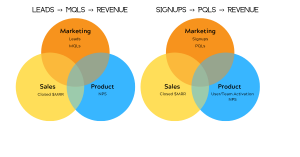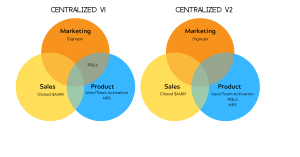At one point in my life, I semi-joined a cult, entirely by accident.
I was stuck,
not stuck, like glued to a floor,
figuratively stuck, unable to find my purpose in life.
I was a software engineer, a job I was distinctly average at and had no real passion for.
So, I attended an NLP conference (Neuro-Linguistic Programming), to get more efficient at both setting goals, and achieving those goals.
Sidenote: One of the great powers NLP gives you is the ability to read someone's body and eye movement to know if their lying or telling the truth. It's a lot of fun telling people this before asking them a series of questions :)
There was an eclectic mix of people at the various NLP courses I did.
People looking for help,
looking for answers,
looking for some meaning to their life.
As you can imagine, that means a lot of people who attended the different classes were confused; they didn't have a clear picture of their future.
NLP teaches you confusion is something to get excited about; it's how you feel before you have a breakthrough.
Wait, how does this apply to growth?
As a company scales, it's not surprising that team alignment and organization becomes one of their best growth levers.
When you conjure up thoughts of team organization, it typically results in visuals of tree structures with teams all siloed by function.

A growth team can often break this mode as its goals span across different functions.
From my experience, and from talking with over 60 experts on the GrowthTLDR podcast, the evolution of growth in companies goes through three typical phases, from chaos to centralized to decentralized.
During the chaos phase growth can often cause a bunch of confusion for other teams, but just like NLP says, that confusion often leads to a breakthrough that causes the company to invest more heavily in 'growth.'
1. The Choas Phase
The first phase can often be a little chaotic.
Someone in the company gets behind growth,
they even have an idea of the metric to work on,
but they're not sure about team structure or reporting hierarchy.
A small collection of people get together, do 'growth,' step on a lot of toes and create some chaos across teams.
"Hey, who the hell are these people trying to get all up in our stuff!"
When we started freemium at HubSpot, we loosely based who owned what metrics on our existing business.

Product Qualified Leads are the freemium version of Marketing Qualified Leads. They're users who are using your free products and are interested in upgrading to your paid products.
For example, one of our PQLs are users who have hit their limit on free features and ask to speak with our sales team.
The friction in our model is probably apparent from the above graphic.
The marketing team relied on the product teams for any experiments to increase PQLs. Because growth was still in its infancy, those teams didn't share the same goals.
I also didn't help matters. As the marketing person responsible for driving those metrics, I could have done a far better job working with product and engineering in the first 6-12 months.
As an example, I would often come to those teams with a complete list of changes I wanted made to increase PQLs and expect people to implement them. But, as I quickly learned the job of a great PM is to present their engineering team with a well-researched problem, and for them to collaborate on potential solutions.
There are a host of different reasons things can get funky in the chaos stage. However, in some cases, from the burning fires created by growth comes a majestic metric that sores in value.
You have something tangible to show the business on why growth is worth the investment.
On the GrowthTLDR podcast, Jason Barbota, global growth lead for IBM, talked about how growth went through this stage when he first started, and how the results of a couple of experiments completely changed how growth is perceived at the company:
[perfectpullquote align="full" bordertop="false" cite="" link="" color="" class="" size=""]After those successful experiments, every product manager wanted to know how do I get my six million bucks? That's when everything flipped on its head. That's when it took off. We went from the chaos stage to not being able to handle all of the demand from product managers wanting us to help them run experiments.[/perfectpullquote]
How be successful in the chaos stage?
- Don't get bogged down by reporting structure, but get buy-in from stakeholders about how things will work
- Focus on experiments where you can get wins on the board, e.g., ones you can turn around in a short amount of time.
- If working cross-functionally spend time learning how each team works. Swap desks to sit with them.
- Pick one metric to create a small group around
2. The Centralized Phase
There is nothing like real data to turn people into believers.
At this point, most companies move into a centralized phase. From the chaos came results, and now it's time to scale those through better team organization.
When I think of centralized, it's less about ownership by function, and more about creating a team who can take full ownership of the metrics you care about.
You have a single group who have all the resources they need to be successful. They're not reliant on other teams who have different goals and are measured by different metrics.
For example, at HubSpot, we went through two versions of a centralized model.

We had a team from marketing and product who co-owned metrics.
We then created a dedicated growth team in product who took ownership of the in-app metrics like activation and PQLs.
How to be successful in the centralized stage?
- Instrument analytics correctly so you know what metrics to track, and how you're trending against those metrics.
- Invest in an experiment framework & documentation that allows you to cycle through experiments quickly and share results across teams.
- Have a single team/group who can take ownership of both key metrics and experiment framework. Invest in resources on that team/group, so they're not reliant on other teams for their success.
3. The Decentralized Phase
If you've made it to the decentralized phase, congratulations, let's take a quick break to do a happy dance! Things have gone well :)
30-second pause for a happy dance.
A great by-product of having a growth team in a lot of companies is it starts to educate your product managers and engineers about growth.
Even if they're not part of that group, chances are they're interacting with them. They're being asked to make changes to a feature, add onboarding, change upgrade points.
The PM's start to take ownership of their activation rate; they want to experiment with the upgrade points.
The growth teams missions changes from execution to enablement.
They provide tools, frameworks, supply documentation for other teams to do growth for their products & features.
On the GrowthTLDR podcast Brittany Bingham, former Sr.Director of Growth at SurveyMonkey talked about how SurveyMonkey transitioned into this phase:
[perfectpullquote align="full" bordertop="false" cite="" link="" color="" class="" size=""]We recently restructured the growth product organization to no longer be centralized. Historically all of the AB tasks and all of the testing, growth experiments, would run through this organization. We built out an internal testing tool that gives all of the teams the ability to conduct tests and prioritize traffic against it.[/perfectpullquote]
We kept a centralized team to make the decisions around best practices as well as the prioritization of tests.
But we gave all product and engineering teams the ability to conduct experiments on their own pretty quickly."
Jason Barbato also talked about this phase at IBM on the GrowthTLDR podcast. His team have now moved to a decentralized phase and created a 6-week growth accelerator program to teach product teams how to do growth.
[perfectpullquote align="full" bordertop="false" cite="" link="" color="" class="" size=""]We now run a 6-week growth accelerator program that teaches product teams how to run a full growth framework. For example, our hybrid cloud team went through the program. Before taking it, they hadn't run a single experiment. After taking it, they set a goal to run 500.[/perfectpullquote]
The decentralized phase starts to turn growth from a single function into how muscle product teams use to build the product.
All things are a journey; it's that journey that makes things fun!
Topics: Growth
